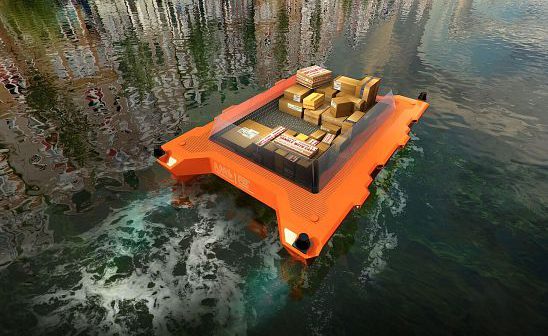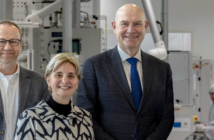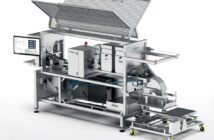Ooit zullen zelfvarende boten doordgewoon zijn op het water. Onderzoekers van de TU Delft werken aan project Roboat en maken een prototype van een robotboot die begin volgende jaar in de Amsterdamse grachten wordt losgelaten.
 Dr. Arjan van Timmeren, Professor van de Environmental Technology & Design department and also as the Scientific Director van het AMS Institute, deelnemer aan het project Roboat. Dit is het eerste research programma over zelfvarende systemen die voor transport van mensenen goederen om data te verzamelen. De researchers komen van de TU Delft, the Massachusetts Institute of Technology en Wageningen University.
Dr. Arjan van Timmeren, Professor van de Environmental Technology & Design department and also as the Scientific Director van het AMS Institute, deelnemer aan het project Roboat. Dit is het eerste research programma over zelfvarende systemen die voor transport van mensenen goederen om data te verzamelen. De researchers komen van de TU Delft, the Massachusetts Institute of Technology en Wageningen University.
De groep is van plan om met protypes van de boten te gaan varen in de Amsterdamse grachten.
De researchers van MIT willen de boten testen onder normale condities.” Volgens Dr. Van Timmeren worden de boten op lage snelheid gecontroleerd getest.
The project hopes to not only research the development of autonomous watercraft similar to self-driving cars but to also create vehicles that can self-organise and construct temporary structures like bridges during festivals and periods of heavy traffic. Roboat’s researchers also aim to further investigate the potential for their vehicles to accomplish tasks that include removing abandoned bicycles from Amsterdam’s canals and even detecting potential epidemics while travelling through sewer systems.

Rudy Negenborn
Senior lecturers Klaas Visser and Dr. Rudy Negenborn from 3mE’s Department of Marine and Transport Technology are also involved in a project called ‘Trajectory HOP! Let’s Go Outside.’ Over the next several years, they’ll be launching robotic boats into the waters of the department’s pond. The miniature vessels, which vary in length from 30 to 60 cm, will be used to execute complex manoeuvres similar to the ones much larger cargo ships perform while navigating through harbours.
“The first tests have already been carried out,” Dr. Negenborn said. “We’ll be taking a phased approach and will use more and more ships in the water, each time with more complex functions.”
They hope to be able to get the boats to sail in formation and avoid collisions with both one another and additional obstacles. They’re aiming to eventually grow their fleet to ten autonomous watercraft.
“With ten of these vessels we can consider the crowded situations that appear in the Port of Rotterdam,” Dr. Negenborn said. “By 2020 we are aiming for the ships to autonomously sail cooperatively.”





